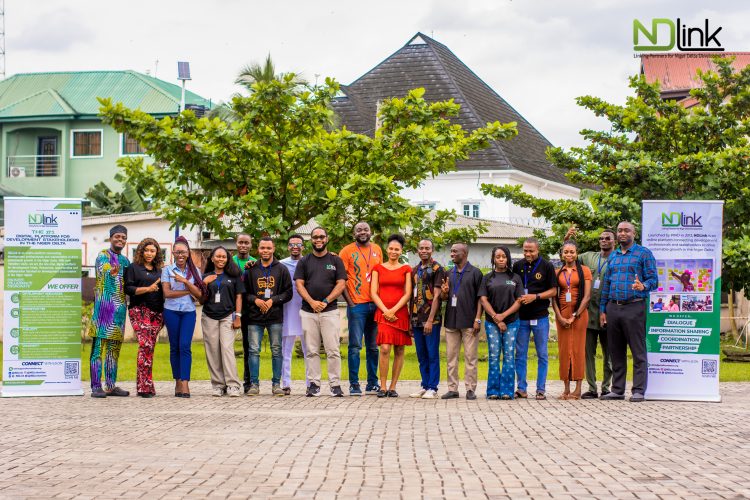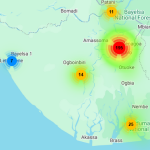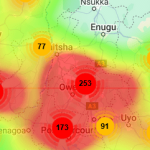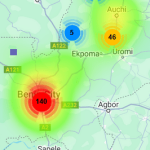PIND pushes for good governance as SACE clocks five
November 9, 2018Niger Delta Quarterly Conflict Tracker: July – September 2018
November 14, 2018USAID transmission roadmap guides electricity development in Africa
A roadmap to unlock electricity trade, published by US Agency for International Development (USAID), could guide leaders in identifying and focusing on specific projects that will bring electricity to millions of people, while bringing down the cost of power and driving economic growth.
The ‘Transmission Roadmap to 2030: A Practical Approach to Unlocking Electricity Trade’, was published on Wednesday and is part of Usaid’s Power Africa initiative.
The roadmap is a critical piece of Power Africa’s 2.0 strategy, which recognises that the power generation projects the initiative is supporting must have adequate transmission and distribution infrastructure to ensure access to electricity to millions of people.
Power Africa and the African Development Bank’s (AfDB’s) Light Up and Power Africa initiatives are tracking more than 800 power generation projects that have the potential of being built by 2030.
There are about 600-million people in Africa that have no access to electricity.
The roadmap promotes the regional transmission agenda, which is part of AfDB’s sustainable utility transformation agenda, and outlines a proposed action plan to move projects in this agenda forward.
The transmission roadmap aims to enhance cooperation between major stakeholders by identifying transmission projects that are critical to cross-border electricity trade. Additionally, it aims to support priority projects by highlighting the contributions development partners can make to their completion, to complement government-led initiatives.
Power Africa coordinator Andrew Herscowitz and AfDB power, energy climate and green growth VP Amadou Hottaspire to mobilise at least $3-billion to install more than 7 500 MW of transmission capacity and bring at least ten priority projects to financial close by 2030.
Additionally, the aspiration includes having 5 000 km of transmission lines installed, ten cross-border transactions facilitated and increasing generation capacity by 30 000 MW, creating 60-million new power connections.
The US government in 2013 launched Power Africa in partnership with African governments, bilateral and multilateral development partners and the private sector to double access to electricity in sub-Saharan Africa and accelerate power transactions.
Power Africa has partnerships in place with about 160 public and private sector entities.
ROADMAP HIGHLIGHTS
The transmission roadmap identifies two opportunities in East Africa that would need transmission line development prioritization – the exports to Tanzania line (EKTZ line) and the Southern Africa and sub-regional trade in the Nile Basin power interconnections (Nelsap).
Tanzania will experience a supply deficit in the medium term, ranging between 500 MW and 800 MW. Sources of power could come from Ethiopia, which is anticipated to have generation surpluses of between 1 200 MW and 1 900 MW from lost-cost hydropower by 2030.
Nelsap could move power to Rwanda, which is expected to remain in deficit in the short term. Power could come from Kenya or Ethiopia, through reinforced interconnection about Lake Victoria – covering Kenya, Uganda, Rwanda, Burundi and Tanzania, with connections to the Democratic Republic of Congo (DRC) as well.
The transmission roadmap further identifies opportunities in Southern Africa; the central corridor from South Africa to the DRC, integrating Malawi into the power pool; the western corridor delivering power to Namibia, and bringing new power capacity to the region, for example, in Mozambique.
The central corridor opportunity between South Africa, Zimbabwe, Zambia, Mozambique and the DRC will enable the export of power to Zambia and industrial offtakers, such as the copperbelt in southern DRC and north-western Zambia. Power sources would include South Africa in the short term and Mozambique in the medium term.
The roadmap also suggests opportunities in West Africa, namely the interconnection of the Senegal-Guinea axis, addressing power deficits in landlocked countries such as Burkina Faso, enabling Côte d’Ivoire to export to the west, and addressing regional imbalances in the eastern Gulf of Guinea.
ALSO READ: Malo: Renewable energy can bridge power generation gap
Opinion: How innovators are responding to the changing nature of work
Chevron – Nigeria’s gas infrastructure development will drive diversification
REGIONAL DEMAND
East Africa’s peak supply of about 7 800 MW in 2018, is expected to grow to about 17 800 MW by 2025, with peak demand of about 7 000 MW growing to about 14 400 MW.
The roadmap anticipates Ethiopia, Kenya and Uganda will have power surpluses, while Tanzania and Rwanda will have deficits through 2022 and 2030, respectively. Opportunities therefore exist for cross-border trade.
Southern Africa’s peak supply of about 63 700 MW in 2018 will rise to about 76 800 MW in 2025, with peak demand of about 54 300 MW growing to about 66 200 MW.
The aggregate surplus of about 9 400 MW this year is driven by countries with surpluses (Angola and South Africa), while some countries (such as Malawi and Namibia) will have power deficits.
Countries such as Mozambique and Zambia are expected to transition from deficit to surplus by 2030.
Southern Africa also offers opportunities to trade power between countries, in some cases facilitated by existing infrastructure.
West Africa’s peak supply of about 13 500 MW in 2018 is forecast to grow to about 30 400 MW in 2025, with peak demand of about 17 700 MW growing to about 30 600 MW.
Ghana, Côte d’Ivoire, Cameroon, Guinea, Liberia, Senegal and Togo should maintain energy surpluses between 2018 and 2025, while Burkina Faso, Gambia, Guinea Bissau, Niger and Nigeria should have deficits over the period, with
Niger transitioning to a surplus in 2025.
Benin, Mauritania and Sierra Leone are expected to transition from a light deficit to a light surplus over the period, while Mali should follow the opposite trajectory. Again, this situation suggests opportunities for inter-country trade, according to the transmission roadmap.
Culled From – EngineeringNews
Picture Credit – rd.com









